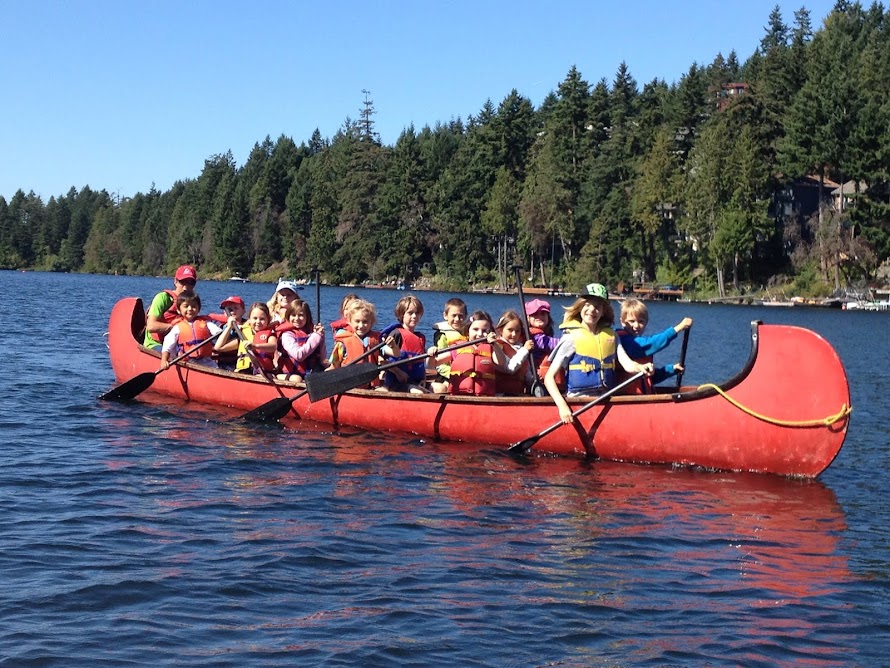For many families, salmon is a staple food here on Vancouver Island. The First People have eaten all five species of salmon for centuries and newcomers who have been on the island for any length of time, whole-heartedly embrace this cuisine. Most Island children have seen a salmon run (and I don't mean on two legs) and watching the spawning is a pastime here. The fish is part of our Island culture and something that we reflect in our elementary program.
Every year, our elementary teacher (Diana) and the children set up the salmon tank, which resides in the broom closet just off the elementary classroom. They prepare it with rocks and cold water, ensure there are no holes in the fish net, make sure the buckets are scrupulously clean, and that the tank's insulation is all in order. (In order for the salmon to survive and be comfortable the temperature of the water should be 12.8 C). When the tank is ready, someone from the Salmonids Program (Ministry of the Environment) comes and drops off the salmon eggs.
Each day, the children take turns checking the eggs, recording the temperature and making scientific notes on a clipboard that sits on the tank. Once the fish hatch, feeding becomes part of the daily routine.
When the time is right – usually just before it is time to release the fry (go here for more information about salmon) Diana brings a couple of frozen salmon to school to be inspected and dissected by the children. (The fish she has are spawning adults. Spawners lay eggs and die within a few days.)
They begin by discussing the outer features of the fish. After all, the children have all eaten salmon, they've been learning the parts of the fish from the nomenclature cards for years, and they've watched the fish in the classroom fish tanks. Now they can really see the head, fins, tail, eye, lateral line, gills, and trunk. With Diana's guidance, they discuss how and why the different parts work.

When the fish are thawed and the children have all inspected the exterior of the fish, Diana's husband Dennis comes in to show the children the interior of the fish. This, of course, means it has to be dissected and every little bit of the fish is inspected. (Dennis has work with the Dept. of Fisheries for years so he is an expert on fish bits.) This process is quite different from catching and gutting the fish one is about to eat, but the children are fascinated none-the-less.
The cycle of life –Discover Montessori style.

2 comments:
After reading this it dawned on me. We nurture our children like those little fish. We care for them, making sure they learn all they need to know to "make it" out there in the Big Ocean. Then we release them. Always waiting and hoping for them to come back home, knowing in our hearts that they are on their own journey. Thanks to Montessori, I am confident and hopeful that my little fish will survive his big journey in the ocean of life.
And that comment reminded me of that famous Montessori cartoon - a school of fishes, each one swimming in their own (different) direction. Two other fishes are watching and one comments "That must be a Montessori school."
Post a Comment